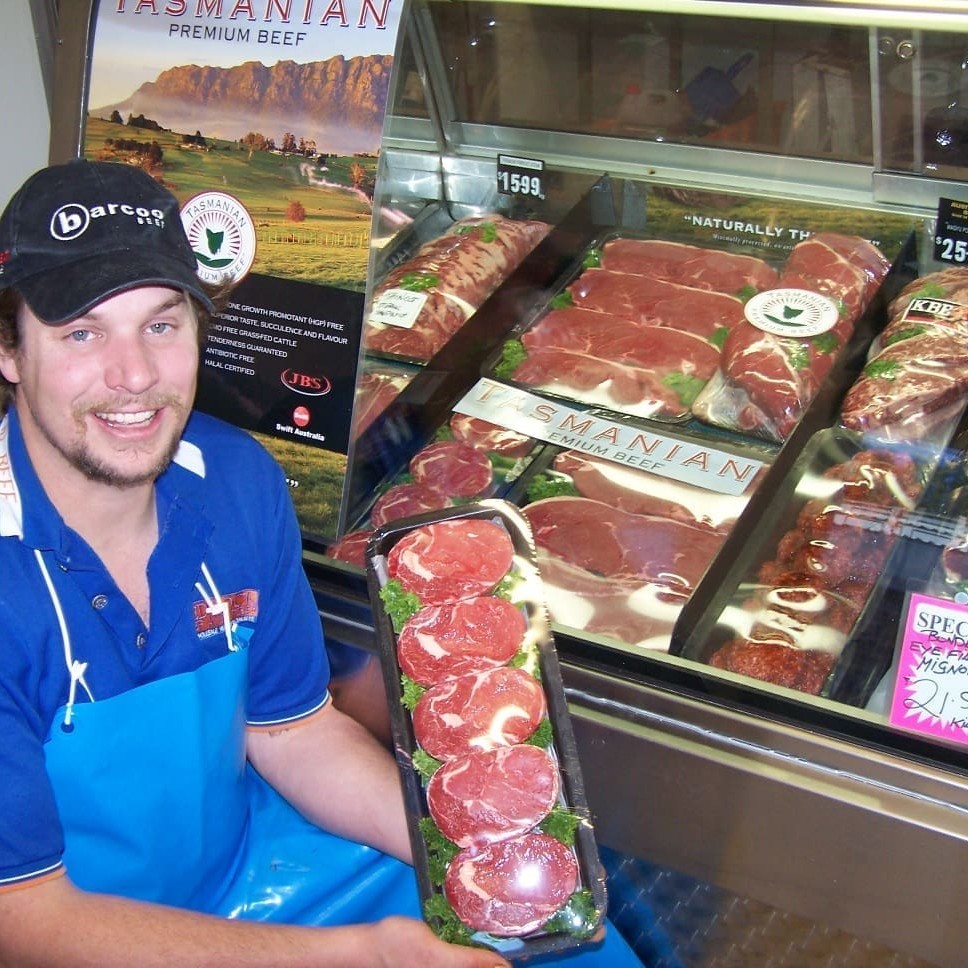 The gradual erosion in retail beef market share held by independent butchers across Australia has continued in the latest Nielsen Homescan* retail survey released this week.
The gradual erosion in retail beef market share held by independent butchers across Australia has continued in the latest Nielsen Homescan* retail survey released this week.
For the rolling quarter ended May 18, independent butchers held a 22.2 percent share of national retail beef sales – a full 1pc drop from a month earlier.
Butchers have now lost 2.5pc share in the past four months, slipping below Coles in terms of share for the first time in February. For the previous 24 months, butchers held a market share advantage over Coles, but the gap started to narrow during the latter stages of 2012.
The explanation behind the loss of share by butchers isn’t hard to find: both market leader, Woolworths (32.8pc share this month) and Coles (24.5pc share) have continued to gain ground at the expense of butchers and some other smaller competitors since January.
It should be noted that the Nielsen assessment is based on rolling quarterly figures, not single monthly figures, because they are regarded by analysts as being a more accurate reflection of longer-term trends.
Both majors, Coles and Woolworths have gained 1.6pc share over the past four months, mostly to the detriment of butchers.
After a period last year where Coles appeared to be starting to close the gap against its largest supermarket rival, Woolworths has gradually widened its market share gap again from 7.5pc to 8.3pc since February.
Both Coles and Woolworths continue with sharply discounted retail offers on MSA grilling and other beef cuts, as part of widely-publicised ‘retail price wars.’
The companies’ online shopping platforms, which accurately reflect current physical supermarket prices, showed that yesterday, both companies were still offering sliced MSA-eligible yearling rump at $13.50/kg, down from $18.99 earlier.
Coles had MSA-equivalent porterhouse steaks at $20/kg (reduced from $25/kg) while the Woolworths MSA porterhouse was listed at $22.99, down from $24.40. Coles' topside roast was $10.82/kg, while Woolworths' (not a direct equivalent but a leaner, Heart Smart-tagged version) was $12.97/kg.
Click here to see Coles' online shopping platform; click here to see Woolworths' online shopping platform.
Meanwhile other national red meat retailers showed little change in the latest Nielsen monthly survey.
The independently-owned IGA supermarket group was the best performed, lifting its market share 0.4pc over the previous reporting period to 9.5pc. That’s IGA’s best result in almost two years.
The Aldi supermarket group also continued a slight recent rise, recording a share figure of 7.1pc. The ‘other’ supermarkets category was unchanged at 3.9pc, but that still represented a big drop from figures above 5pc this time last year.
Category outlook
The overall fresh meat category (beef, chicken, lamb, pork, seafood) recorded value growth of +2.0pc for the rolling quarter ending May 18, versus the same period a year ago. Nielsen said that was due both to an increase in price, and frequency of purchase.
The report showed strong price increases across most meat proteins over the past rolling-quarter compared to last year. Chicken (+79c/kg) and pork (+34c/kg) prices have increased considerably. The price per kg of lamb (-$1.14c) has dropped the most, while beef has decreased slightly (-$0.14) compared to this time last year.
It’s important to note that the prices reported by Nielsen are measured as the average $/kg value of the items in the surveyed consumer shopping baskets, and do not attempt to represent the overall average value of beef and other proteins being sold in the retail marketplace.
Under these terms, beef recorded an average price of $9.82/kg for the May rolling quarter; chicken $8.19/kg; lamb $10.71; and pork $10.29.
Value share
Beef’s share of total retail meat protein value measured under the survey methodology increased a little in May to 36.6pc, but it still sits a long way from recent seasonal highs of 39.3pc in July-September last year.
Chicken’s value share increased 0.3pc to 26.9pc, while lamb fell by a similar amount to 13.7pc share. Pork was steady at 10.1pc.
Compared with a year ago, chicken experienced the strongest value share growth at +0.7pc, while the value shares of lamb (+0.57pc) and pork (+0.39pc) have also increased. Despite quarterly beef share increasing from last month, its share has decreased -1.28pc compared to the same period in 2012.
* What is Nielsen Homescan?
- A consumer panel of 10,000 households
- Demographically and geographically representative of all Australian households
- Electronically record their household purchases of all grocery foods (fresh and packaged)
How are panel participants recruited?
- Households are recruited on-line via a random sampling method
- The Homescan panel is stratified by life stage, region and household size
- Households are screened to assess suitability and to ensure they do not work in marketing, market research or FMCG.
